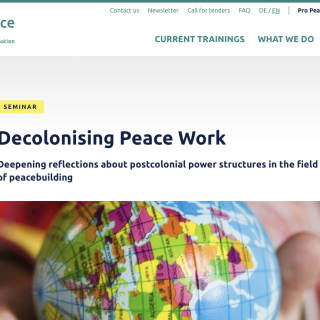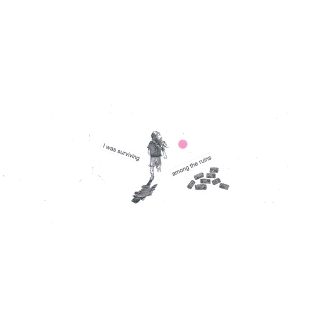The research unveiled several recurring patterns pertaining to the commemorative activities related to the 2001 conflict in Macedonia. The dominant patterns included the commemorations of the state security forces, the commemorations of the insurgents, the anniversaries of the OFA, and the commemorations of civil victims in the state. In this text, I will focus on the second one, providing its major coordinates and contexts developed during the past years.
To start with, it is important to be noted that the commemorations of the slain members of the state security forces varied from several aspects. In terms of officiality, for instance, we observed that during the conflict and in its immediate aftermath, that is, after August 2001, several state sponsored institutions started to place memorials dedicated to the slain members of the state security forces, while we also noted the first less formal commemorations in their birthplaces. These events were done in line with the prevailing discourse which saw them as defenders of the state sovereignty and therefore Macedonian patriots and heroes of the nation. Moreover, in both the above cases there were no reported tensions whatsoever, which was not the case with the commemorative events related to the slain members of the state security forces at the sites of their killings. Those sites were usually sites of ambushes which took place in 2001, at the frontlines or in the villages with an ethnic Albanian majority, such as the ones in Vejce and Karpalak, both near the town of Tetovo. In most of the cases, the plaques were getting destroyed soon after the events.
The commemorations of the ethnic Albanian insurgents revolve around the tropes of their struggle, sacrifice, and victory, which resembles the dynamics related to the fallen KLA soldiers in Kosovo. However, contrary to Kosovo where several rival political factions compete over the legacy of the Kosovo Liberation War, in post-conflict Macedonia, there are two uncontested heirs of the legacy of 2001, that is the political party Democratic Union for Integration (DUI), or the political wing of the insurgents turned political party, and their war veteran organization. The earliest such commemorative activities related to the fallen Albanian insurgents in Macedonia had the “liberation” of the villages and towns that they brought under military control in 2001 as a highlight. These initiatives were not in tandem with the state institutions.
As of the mid-2008, DUI started to stress the historical narrative linking the early Albanian nation-building with the struggle during the 2001 conflict in Macedonia. This narrative was promoted via public commemorations but also in memorial institutions, such as in the so-called Museum of Freedom in the Skopje municipality of Chair (2008) and the Museum of the NLA in Slupchane (2011), which exhibits both military memorabilia and honors the Albanian civil victims. The amalgamation of different historical periods was much inspired by the ideas of pan-Albanian past resistance. In Kosovo, for instance, as neatly observed by Anna Di Lellio and Stephanie Schwandner-Sievers, this narrative centered upon Adam Jashari and depicted his sacrifice in line with the Albanian resistance in the early 20th century. A monument to Jashari was also erected in Radusha, Macedonia, in 2012.
In parallel to the above construction of the image of military victory, the commemorative culture related to the Albanian insurgents in Macedonia involved an element of sacrifice. The commemorative construction of “martyrs of the Albanian nation” in Macedonia, as precisely observed by Vasiliki Neofotistos, was done as a result of the collaborative efforts of their friends and relatives, with a financial support of the Albanian community in Macedonia and the Albanian diaspora. Those memorials were built in the central places of the settlements, while some of them were placed on elevated grounds overlooking the Albanian villages in North Macedonia.
One of the most recurring symbols of the post-2001 Albanian memorial architecture in Macedonia is the black double headed eagle: such a monument was erected in a predominantly Albanian municipality in Skopje in 2016, for instance, on the anniversary of the start of the armed hostilities in 2001. The memory narrative over the fallen NLA fighters had also religious references and aims at attributing a notion of religious purity to the NLA casualties, in addition to discourse that frames those very fighters as insurgents who sacrificed their lives for the Albanian nation. The role of the religion in the commemorative practices related to Albanian “martyrs of the nation” is much more than a mere ethnic denominator, as per Paul Reef. Moreover, this process has a goal of ascribing aspects of religious martyrdom to the “martyrs of the nation”.
An illustrative case, in these regards, is the reburial of Aqif Krosi from Rečani in 1997, a leader of the Albanian nationalistic organization National Front [al. Balli Kombëtar] that cooperated with the Nazis during the Second World War. After a long search for his body that had been buried in a secret place by the socialist authorities, a bribed police officer revealed its location and Krosi was then reburied in the traditional Muslim fashion at the local mosque’s cemetery while other villagers have been buried over a kilometer outside the village. Krosi’s tombstone was adorned with Albanian double-headed eagle and an inscription that depicts him as “an inspiration for every Albanian” and a monument of him was erected in the village shortly afterwards.
Finally, it is important to be stressed that the DUI appropriated the OFA as a token of its military victory in 2001; a narrative which was mostly promoted on the anniversaries of the signing of the OFA. More precisely, as of August 2002 and up until 2006, only DUI organized events marking the signing of OFA in different multiethnic places across the state. These events were boycotted by the Macedonian politicians; however, they were attended by members of the diplomatic corps in the state and representatives of the international community. As such, DUI used the platform of the OFA annual commemorations to relegitimize its political agenda as a pro-NATO and pro-European party, trusted partner from the Albanian political block in Macedonia, and a party that aims at settling interethnic tensions in a democratic and peaceful manner.
State institutions started to organize events marking OFA only as of 2006. This came after the formation of a special institution, the Secretariat for the implementation of the OFA, that would turn into the Ministry of political system in the late 2010s, which eventually took over the organization of the anniversaries of OFA.
The annual ceremonies of 13th August remain the most successful model of a joint commemoration of any aspect of the 2001 armed conflict in Macedonia. The anniversary commemoration, focused on the common prospects of the ethnic communities, also legitimizes the shared geopolitical visions of the political elites. Its reception seems to be more favorable than other commemorative events involving representatives of the two ethnic groups. However, the attempts to open the annual ceremonies of the OFA to the wider public are not obtaining similar successes.




